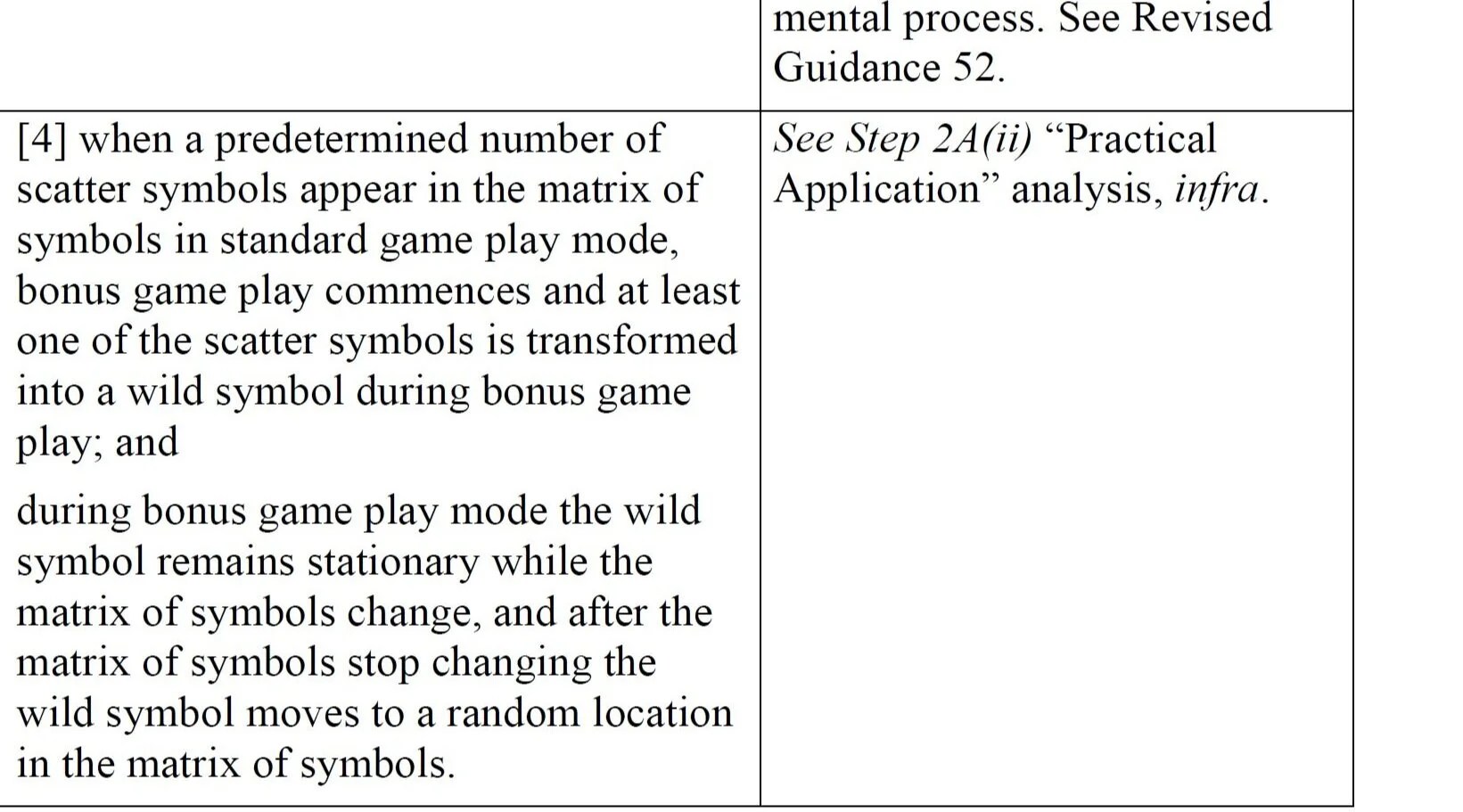As we have discussed previously (see, here and here), Section 101 rejections can be difficult to overcome, but one potentially successful strategy relates to the technical problem/solution approach. A recent PTAB decision illustrates how the abstract idea label is loosely applied, yet the rejection can be overcome by focusing on the integration into a practical application under the USPTO’s revised guidelines.
Appeal 2018-001861 (Application 14/010,227) relates to a gaming machine including moving wild symbols, including gaming machines such as slot machines having wild symbols and bonus game features. Claim 1 on appeal
1. A gaming machine having standard and bonus game play mode, comprising:
a slot machine including a housing, an interface, a controller, a currency acceptor and a card reader in operative communication to enable slot machine game play;
the interface attaches to the housing;
the currency acceptor and card reader are enabled to receive payments to initiate slot machine game play;
a computer in operative communication with the interface, the computer having a memory and a processor, the memory stores game play instructions and a set of symbols including game symbols, scatter symbols and wild symbols, the computer operates the controller, the currency acceptor and the card reader;
the game play instructions include instructions for a standard game play mode and bonus game play mode;
during standard game play mode, the interface displays a matrix of symbols representing sets of reels, and the computer calculates payouts based on the symbols, which are randomly arranged within the matrix;
when a predetermined number of scatter symbols appear in the matrix of symbols in standard game play mode, bonus game play commences and at least one of the scatter symbols is transformed into a wild symbol during bonus game play; and
during bonus game play mode the wild symbol remains stationary while the matrix of symbols change, and after the matrix of symbols stop changing the wild symbol moves to a random location in the matrix of symbols.
The only issue on appeal was a Section 101 rejection. The examiner asserted that the claims merely covered an abstract idea following in re Smith and Planet Bingo. The rejection is reproduced below and is fairly typical, as the Examiner asserts that the claim is:
directed to a wagering game with scatter symbols transformed into roaming wild symbols played according to the rules outlined below, which are a method of determining financial obligations using probability. The CAFC has determined in, In Re Smith, that such claims are directed to an abstract idea similar to those found in Alice and Bilski. Additionally, the Federal Circuit has ruled that managing a game is a method of organizing human activity and therefore an abstract idea. (Planet Bingo, LLC v. VKGS LLC, 2013-1663 (Fed. Cir., 2014)) The claim(s) does/do not include additional elements that are sufficient to amount to significantly more than the judicial exception because the additional elements amount to insignificant extra-solution activity on an art-generic computer.
As a quick aside – recognize how quickly such a rejection can be made by the Examiner. No real search of the prior art is needed. No real detailed review of the invention is necessary. Rather, the examiner can simply abstract the claimed elements and fit them into a pre-canned paragraph and then reject the case (and get points), maintain the rejection final (get more points), and then write a short Answer with the same arguments (and get even more points).
Returning to the PTAB decision in this case, the Board sets forth claim 1 elements in a table in order to identify the “abstract” ideas and the so-called “conventional” elements using the Revised Guidlines. Whether one agrees with the categorization of the Board or not, the table is quite helpful in seeing how the Board members review claims and make decisions as to whether Section 101 applies:


Given this breakdown, it is easy to see that the PTAB considers the claim elements [1] – [3] as covering an abstract idea. However, element [4] was found to integrate the idea into a practical application. And here, the PTAB cites the specification (paragraphs 34-35) as supporting the idea that element [4] represents an improvement in the underlying technology, namely, that these limitations provide a technological improvement to gaming machines by providing a new and improved level of bonus play that uses new and improved animations. The specification explains that according the claimed approach, bonus game play mode is automatically initiated and accepted by enabling a user to activate a button on the interface where the matrix of symbols disappears and is completely replaced by bonus game play images when the gaming machine enters bonus game play mode. This was enough of a technical problem to support patentability.
In this way, the applicant was able to successfully overcome the 101 rejection at the PTAB. Specifically, the Applicant was able to point to some explanation in the specification that linked particular claim elements to an underlying technical problem address with the integration of the abstract idea into a practical application.

Leave a comment